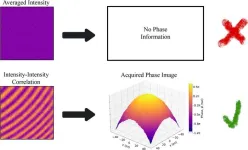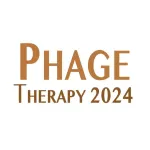(Press-News.org) PITTSBURGH, Dec. 22, 2023 – A new study indicates that severity of amyloid deposition in the brain — not just age — may be key to determining who will benefit from new anti-amyloid therapies to delay the progression of Alzheimer’s disease.
University of Pittsburgh clinicians and scientists report that the accumulation of toxic amyloid beta clumps that signal Alzheimer’s disease pathology accelerates in old age but the baseline amyloid burden and the overall brain health going into this acceleration are more powerful predictors of who is most likely to progress to Alzheimer’s. The paper was published today in Neurology, the medical journal of the American Academy of Neurology.
“Understanding the complexity of the increased amyloid accumulation, when individuals are cognitively normal, is critical for improved implementation of dementia treatments,” said corresponding author Oscar Lopez, M.D., professor of neurology at Pitt and chief of cognitive and behavioral neurology at UPMC.
The presence and the overall quantity and distribution of amyloid beta, or A-beta, clumps in the brain are some of the most common neuropathologies associated with Alzheimer’s. Yet, while people who are 80 and older have the highest prevalence of Alzheimer’s-associated dementias, most studies that measured A-beta burden in the brain using imaging techniques have focused on younger populations. As such, the connection between A-beta and dementia in the oldest of the old have remained unclear.
Lopez and his colleagues set to change that by examining the relationship between A-beta deposition and new cases of dementia in 94 elderly individuals who were cognitively unimpaired when the study launched. Participants were enrolled in the study at a mean age of 85 and followed for 11 years or until their passing, receiving at least two PET-scans over the course of the study. The rate of amyloid deposition in the brain of these individuals was compared with a younger group from the Australian Imaging, Biomarker, and Lifestyle (AIBL) study.
Researchers observed a steady increase in A-beta accumulation in all participants over time, independent of their A-beta status at the beginning of the study. But this accumulation was significantly faster in patients in their 80s and older compared to participants in their late 60s, explaining the higher prevalence of A-beta in the oldest olds.
In the end, very few participants developed dementia without having A-beta deposits in the brain. Importantly, individuals whose brain scans were positive for amyloid at the beginning of the study developed dementia two years earlier than those who were amyloid-negative.
Researchers also found that the short-term change in A-beta alone over a period of 1.8 years could not predict future risk of dementia. By contrast, the severity of baseline A-beta burden, along with other markers of brain damage defined by the presence of white matter lesions (a marker of small vessel disease) and decrease in gray matter thickness in the brain cortex (a marker of neurodegeneration) were the strongest predictors of risk, indicating that an active pathological process was already in place when the study began.
“Our findings are consistent with studies showing that the amyloid accumulation in the brain takes decades to develop, and occurs in the context of other brain pathologies, specifically small vessel disease,” said Lopez, who also directs Pitt’s Alzheimer's Disease Research Center. “Whether there is a vascular process that occurs in parallel to the A-beta deposition could not be examined in this study. However, understanding of the timing of the presence of these pathologies will be critical for the implementation of future primary prevention therapies.”
Additional authors of this research include Victor Villemagne, M.D., YueFang Chan, Ph.D., Anne Cohen, Ph.D., William Klunk, M.D., Chester Mathis, Ph.D., Tharick Pascoal, M.D., Milos Ikonomovic, M.D., Beth Snitz, Ph.D., Brian Lopresti, Ph.D., Ilyas Kamboh, Ph.D., and Howard Aizenstein, M.D., all from Pitt.
This study was supported by the National Institutes of Health National Center for Complementary and Integrative Health and the Office of Dietary Supplements (grant U01 AT000162), and the National Institute on Aging (grants P30 AG066468, P01 AG025204, and RF1 AG052525).
END
Predicting Alzheimer’s dementia in oldest of the old
2023-12-22
ELSE PRESS RELEASES FROM THIS DATE:
Ochsner Health honored with Vizient Southern States Brilliance Award
2023-12-22
NEW ORLEANS, La. – Vizient Southern States, a membership alliance for not-for-profit health care providers, awarded Jason Hill, MD, MMM, clinical innovation officer, Ochsner Health, the 2023 Brilliance Award as a result of being selected to present at the 2023 Connections Summit.
This year, six Vizient Southern States’ members were selected to share their stories of success with a national audience of Vizient members. Selected abstracts showcased their organization’s projects that demonstrated ...
Hubble sights a galaxy with ‘forbidden’ light
2023-12-22
This whirling image features a bright spiral galaxy known as MCG-01-24-014, which is located about 275 million light-years from Earth. In addition to being a well-defined spiral galaxy, MCG-01-24-014 has an extremely energetic core known as an active galactic nucleus (AGN) and is categorized as a Type-2 Seyfert galaxy. Seyfert galaxies, along with quasars, host one of the most common subclasses of AGN. While the precise categorization of AGNs is nuanced, Seyfert galaxies tend to be relatively nearby and their central AGN does not outshine its host, while quasars are very distant AGNs with incredible luminosities that outshine ...
Images hidden in noise revealed by a quantum-inspired method
2023-12-22
Researchers at the University of Warsaw's Faculty of Physics with colleagues from Stanford University and Oklahoma State University have introduced a quantum-inspired phase imaging method based on light intensity correlation measurements that is robust to phase noise. The results of the research have been published in the prestigious journal “Science Advances”. The new imaging method can operate even with extremely dim illumination and can prove useful in emerging applications such as in infrared and X-ray interferometric imaging and quantum and matter-wave ...
Engineers develop a vibrating, ingestible capsule that might help treat obesity
2023-12-22
When you eat a large meal, your stomach sends signals to your brain that create a feeling of fullness, which helps you realize it’s time to stop eating. A stomach full of liquid can also send these messages, which is why dieters are often advised to drink a glass of water before eating.
MIT engineers have now come up with a new way to take advantage of that phenomenon, using an ingestible capsule that vibrates within the stomach. These vibrations activate the same stretch receptors that sense when the stomach is distended, creating an illusory sense of fullness.
In animals who were given this ...
Novel ingestible devices developed to create the illusion of satiety
2023-12-22
Obesity interventions, such as gastric bypass surgery, can alter the signaling of the vagal nerve, which plays a crucial role in regulating digestion. In addition to traditional obesity interventions, new weight-management medications, such as Wegovy, are becoming increasingly popular options for patients with obesity since they are non-invasive and require minimal lifestyle modifications. Developing a variety of non-invasive, convenient weight-management options for patients with obesity is essential to help reduce comorbidities such as diabetes, hypertension, cancer ...
The stomach bug that may raise your risk of Alzheimer’s disease
2023-12-22
A common stomach bacteria found in two thirds of the world population may be linked to a higher risk of Alzheimer’s disease, new research suggests.
The study, published in Alzheimer's & Dementia: The Journal of the Alzheimer's Association, investigated whether a clinically apparent Helicobacter pylori (H. pylori) infection increased the risk of Alzheimer's disease in people aged 50 and older. The prevalent infection can trigger indigestion, gastritis, ulcers, and even stomach cancer.
A team of McGill University researchers analyzed health data of over 4 million people in the United Kingdom aged 50 and above between 1988 and 2019. It found ...
Malta Targeting Phage Therapy 2024: The next clinical revolution
2023-12-22
Building on the momentum of the 6th World Congress on Targeting Phage Therapy, that gathered more than 150 attendees from over 30 countries and featured over 71 presentations, the highly anticipated Targeting Phage Therapy 2024 is set to unfold.
Mark Your Agendas for the 7th World Congress on Targeting Phage Therapy
Date: June 20-21, 2024
Location: Corinthia Palace, Malta
What to Expect:
Cutting-edge insights into phage therapy advancements and its potential to revolutionize medicine.
Engaging keynotes and expert panels tackling ...
Signed orders sent via mail nearly doubled liver cancer screening rates
2023-12-22
Liver cancer screening among patients with cirrhosis almost doubled when they were mailed a signed order from their specialist, according to a new study from the Perelman School of Medicine at the University of Pennsylvania. However, when researchers added an incentive of $20 to the mailed orders, it made no difference in whether patients completed their screenings. The work was published this week in Hepatology Communications.
“Our findings show that an approach like this can meaningfully increase liver cancer surveillance, ...
Strong connections found between vaccine hesitancy and support for vaccinating pets
2023-12-22
Texas A&M University School of Public Health research on attitudes toward pet vaccination and how they may be linked with human vaccine hesitancy was the subject of a new study recently published in the journal Vaccine.
Simon Haeder, Ph.D., associate professor, analyzed data from an August 2023 survey of more than 2,000 dog and more than 1,400 cat owners to measure pet vaccination rates, perceptions of vaccines and support for pet vaccination requirements.
“Decreasing pet vaccination rates pose challenges to society for a number of reasons, including increased incidents ...
Laser-driving a 2D material
2023-12-22
Writing in Nature Communications on November 24, engineers at Columbia and theoretical collaborators at the Max Planck for the Structure and Dynamics of Matter find that pairing laser light to crystal lattice vibrations can enhance the nonlinear optical properties of a layered 2D material.
Cecilia Chen, a Columbia Engineering PhD student and co-author of the recent paper, and her colleagues from Alexander Gaeta’s Quantum and Nonlinear Photonics group used hexagonal boron nitride (hBN). hBN is a 2D material similar to graphene: its atoms are arranged in a ...




